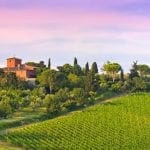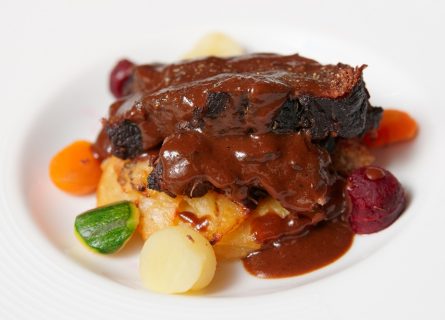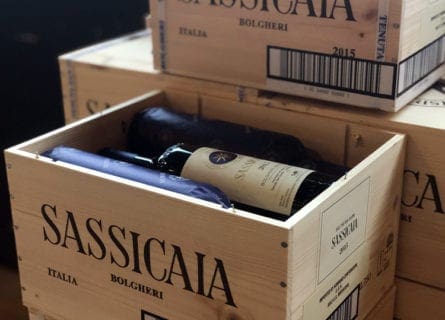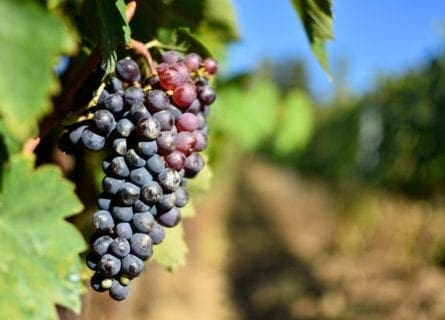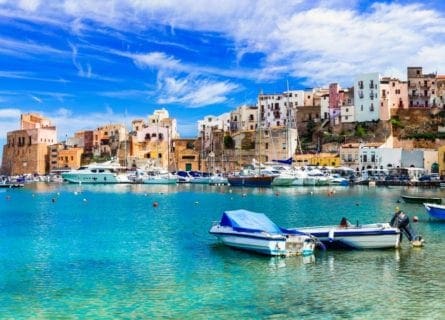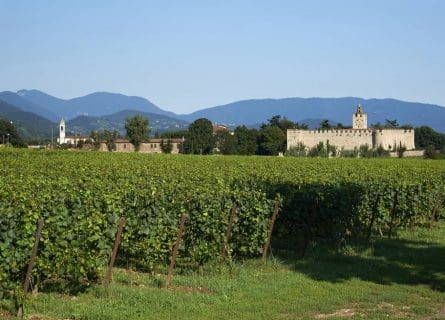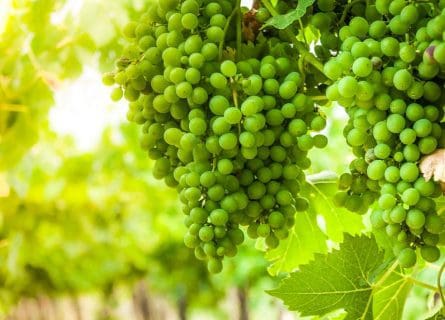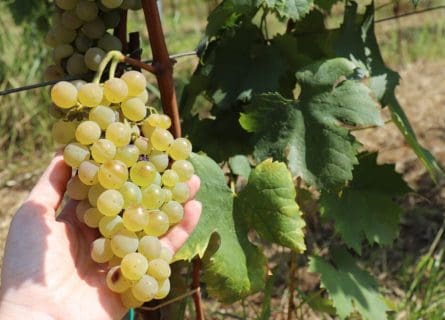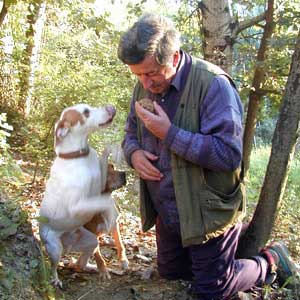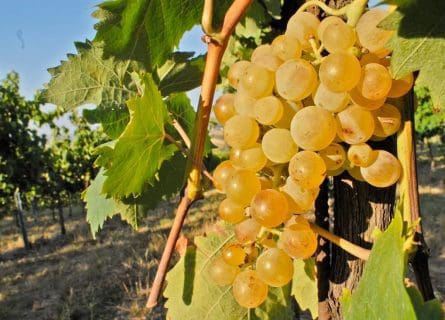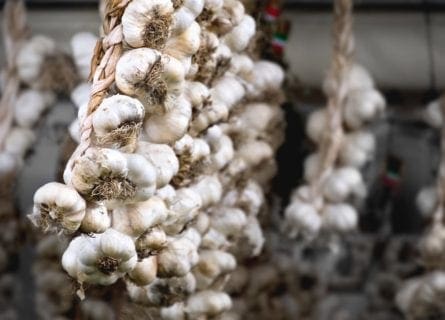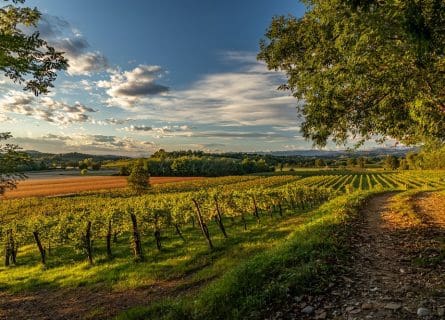Valle d’Aosta Wine Region Guide
Discover the Aosta Valley: Italy's Hidden Wine Gem with Unique Grape Varieties and Alpine Vineyards
EXPLORE ALL OUR GUIDES TO THE BEST ITALIAN WINE REGIONS
Last updated: July 25, 2024
Introduction
The Aosta Valley, a charming and undiscovered part of Italy, is home to a unique wine culture. Despite its remote location and sparse population, this mountainous region boasts a thriving wine scene. Italy’s smallest province is rich in native grape varieties and talented winemakers. Its proximity to the French border and the Alpine wonders of Mont Blanc attracts a steady flow of visitors, all eager to taste the crisp, super-fresh wines that perfectly complement the local cuisine.
Valle d’Aosta may not cater to trophy hunters or those obsessed with famous brands. This small, rural vineyard lacks a DOCG appellation; less than 25% of its total production carries a DOC label.
However, in this world of family-run businesses and local cooperatives, there are some intriguing flavors and genuine surprises waiting to be discovered by those who know where to look.
History
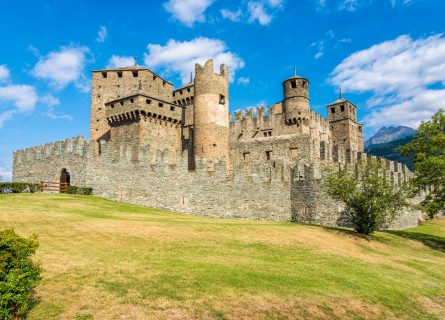
The Aosta Valley’s vertiginous Alpine terrain has been inhabited for over two millennia. The Celts and Ligurians settled here many centuries before the arrival of Christianity in Western Europe. However, they were displaced by the might of Roman armies who took control of the region in 25 BC. During Emperor Augustus’s reign, the Romans founded a settlement called Prætoria Salassorum (Valle d’Aosta means ‘Valley of Augustus’).
They fortified their position by constructing bridges, roads, and imposing battlements. The valley floor and lower slopes of the foothills were planted with native vines, including Fumin and the esoteric Petit Rouge, which supplied the local garrisons and Roman entrepreneurs with sweetened red and white wines for their ‘cauponae’ and ‘tabernae’ (innkeepers and taverns offering basic accommodation).
However, chaos engulfed most of Western Europe after the fall of the Roman Empire in 476 AD. In the aftermath, several factions, including the Frankish Merovingian and Carolingian kings, vied for control of the Alps region. In the 11th century, Humbert I of Savoy founded one of Europe’s most enduring – and influential – political entities.
Indeed, the feudal house of Savoy controlled the mountains, valleys, and vineyards of Aosta (notwithstanding several French invasions) until the 19th century; the late Middle Ages also saw frequent clashes between Savoy and the houses of Provence and Dauphine.
Yet in the mid-13th century, the Holy Roman Emperor Frederick II awarded Aosta the title of Duchy, and religious orders of Benedictine and Cistercian monks managed and organized viticulture. The region maintained a fiercely independent and unique culture until it became part of the Kingdom of Italy in 1861.
Modern Independence and Cultural Fusion
This independent spirit is alive and well in the 21st century. Granted, Valle d’Aosta has planted some international varieties, including Chardonnay. However, there is also a wealth of original tastes and Indigenous grapes to explore. Due to France’s geographical proximity ( its army briefly occupied Aosta at the end of World War II) and close historical links, French influences are an inevitable part of life in the valley—it is an official second language and widely spoken in the tourism sector.
The first holidaymakers, intrepid and newly wealthy, made their way to the Italian Alps at the end of the 1800s. Little has changed: the same magnetic beauty, outdoor activities, and superlative food and drink captivate oenophiles and nature lovers today.
Geography and terroir
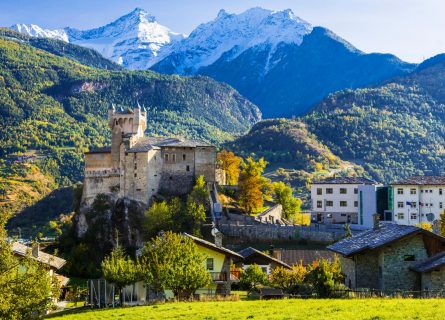
The vineyards of the Valle d’Aosta are truly unique, offering a tranquil and unspoiled part of the Italian landscape. With a tiny population, small-scale pastoral farming, and dramatic alpine peaks, this is a place that promises an escape from the ordinary.
Yet the valley is not solely reliant on winter tourism – viticulture is a key economic activity in the region, providing a livelihood for hundreds of growers and their families. Today, there are approximately 460 hectares of vines planted in the Valle d’Aosta, primarily concentrated on the south-facing slopes that flank the Dora Baltea River; this tributary of the PO meanders its leisurely course from Mont Blanc, traversing the city of Aosta and eventually crossing the border into Piedmont.
It is an unforgettable experience driving from Turin on the A5, passing jagged peaks on the road up to the Aosta Valley and the Mount Blanc tunnel to France. As you enter the Morgex et de la Salle commune, look out for steep terraced vineyards that cling to the lower foothills of the Graian Alps. It truly is an Instagram paradise.
Unique Winemaking Techniques in a Challenging Terrain
The Aosta Valley is a land-locked region with sparse plantable land, and the elevation rises to more than 1200 meters above sea level – mechanical pruning and harvesting are not a feature of life here. Instead, you’ll encounter terraced vineyards separated by stone walls and trained on pergolas; low-trained vines allow berries to absorb the heat reflected by ubiquitous small stones that resemble the galets of Châteauneuf-du-Pape. These unique winemaking techniques are just one of the many intriguing aspects of the Aosta Valley’s wine culture.
However, only some pieces of plantable acreage are suitable for vines. At lower altitudes on the valley floor, centuries of glacial erosion have created fertile, mineral-rich soils that deliver inflated yields and dilute wine; this terrain is ideal for high-intensity arable farming. Fortunately, most quality-focused growers have ‘colonized’ the steep slopes of the region, where a mix of alluvial and gravel terroirs deliver small berries of highly concentrated fruit.
Meanwhile, the vertiginous climats (vineyard sites) benefit from very cool nights thanks to the naturally occurring diurnal temperature variation. This is mainly responsible for the cool-climate character of Aosta red and whites, celebrated for their crisp textures and beautiful ripe acidity.
Ideal Growing Conditions
Yet the area enjoys a continental climate that brings sweltering conditions in July and August: low rainfall and intense sunlight encourage phenolic ripeness even at higher elevations. The region also benefits from the rain shadow effect—much like the vineyards of Alsace—of the Graian Alps and the Mediterranean currents known locally as the föhn. Fungal diseases, meanwhile, are not a major concern in the high-altitude Alpine climate of Aosta.
Today, the valley cultivates an expansive palate of red and white varieties, including some Burgundy grapes (Gamay and Chardonnay) and native gems such as Prié Blanc and the incredibly rare Vien de Nus. But, unlike neighboring Savoie on the other side of the French border, the Aosta Valley produces a far greater volume of red wine.
The stars of Piedmont, Dolcetto, and Nebbiolo thrive in the zone. However, you’ve probably never heard of a host of Indigenous grapes: Cornalin, Fumin, Vuillermin, and the super-esoteric Mayolet. No one could accuse this tiny region of lacking originality or variety.
Winemaking and regional classifications
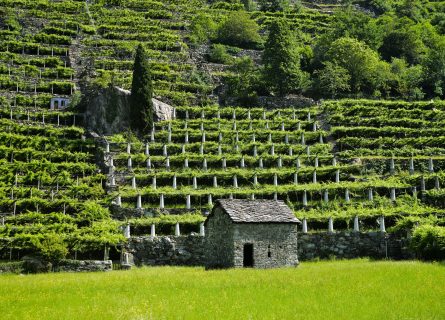
North of Turin is a very small, isolated, and obscure wine region. Yet this compact vineyard has many surprises and exciting discoveries, including some of the most promising Nebbiolo (known locally as “Picotendro”) made outside of Piedmont. You’ll find this local gem in Donnas, a subregion that joins six other distinct territories belonging to the umbrella appellation Valle d’Aosta DOC. They are: Morgex et de la Salle, Enfer d’Arvier, Tourette, Nus, Chambave, and Arnad-Montjovet. Each zone has something unique and wonderful: soil, variety, and landscape synergy.
High-Altitude Viticulture in Donnas
This is particularly true of Donnas, a source of high-reputation (but low-volume) red wines that owe their finesse to the metamorphic soils and towering altitude that define the best of Aosta winegrowing. With a commanding view of the Dora Baltea River, these terraced vineyards are often trained on pergolas, rising to over 600 meters above sea level.
Indeed, the Alpine conditions and almost brisk evening temperatures in summer yield very light and ethereal Nebbiolo wines occasionally blended with up to 15% Petit Rouge, Fumin, Freisa, and even Nevret. According to the DOC framework, producers must age all wines in oak for at least ten months before release – in total, 24 months. As elsewhere, producers in Donnas widely employ vinification in stainless steel to produce wines that showcase good fruit and accessible tannins.
However, the post-fermentation maceration is rarely long, as the local terroir tends to yield berries with large amounts of tannin. Consequently, even the ‘superiore labels’ (30 months aging) are less potent and deeply colored than Nebbiolo wines made in Barolo and Barbaresco. Nevertheless, they are extremely popular with locals and tourists; Arnad-Montjove is another reliable source of affordable Nebbiolo produced in a similar style.
Meanwhile, Chardonnay, Gamay, Merlot, Pinot Blanc, Pinot Gris, Pinot Noir, and Syrah can all be found in the vineyards of the Aosta Valley, generally made into a fresh and fruity style. There is little to distinguish these wines regarding vinification techniques from the best international labels made in Friuli-Venezia and neighboring Lombardy.
Fortunately, the same cannot be said for Petit Rouge – Aosta’s signature red grape variety. It thrives in three key subzones – Enfier d’Arvier, Torrette, and Chambave – where it yields fresh, berry-scented, and elegant red wines. As a rule, gentle extractions and maturation in tank (concrete or steel) tend to bring out the best in Petit Rouge – its delicate perfume and bright fruit can be overwhelmed by oak flavors. If it has a relative across the border, it is undoubtedly the floral and super-fresh Mondeuse of Savoie, Alpine reds for rich and rustic cuisine.
Fumin: The Smoky, Full-Bodied Native
However, the Fumin grape could not be more different. Grown in several of Aosta’s subregions, its name refers to the smoky scent that characterizes these full-bodied and pungent reds. The Yin to Petit Rouge’s Yang traditionally blended in the region, although single-varietal labels are becoming more common in the Valle d’Aosta. And, unlike the other native grapes, Fumin’s tannic structure and herbaceous, spicy fruit profile can benefit from some time in wood; about two years in used barrels are ideal. Slow maturation’s gentle oxidation and softening effects create a far more approachable – and drinkable – style of red wine.
Prié Blanc: A Unique White from Morgex et de la Salle
The valley also makes some excellent white wines based on a mixture of local and imported grapes. Prié Blanc is the most authentic style available, grown in the vineyards of Morgex et de la Salle under the shadow of Mont Blanc. It is undoubtedly the most beautiful part of the entire region, much loved for its picturesque terraced rows, pergolas, steep hillsides, and surrounding forests.
Interestingly, phylloxera never managed to get a foothold in this part of the Italian landscape due to the harsh winter conditions and sandy soils. As a result, ungrafted vines are not a rare commodity in Morgex et de la Salle.
Gravel and sandy terroir, combined with the high levels of diurnal temperature variation, is why Morgex et de la Salle has no equal in the production of saline whites with bracing acidity and deep minerality. A tiny volume of traditional method sparkling and dessert wine is also made in the Morgex Valley, with berries left on the vine until the first snow appears in the fall. The only problem is finding some: residents and tourists tend to polish off the meager supply!
Facts & Figures
Key wine styles
- Medium-bodied reds; aromatic dry whites; a tiny volume of sparkling and dessert wine
Appellation structure
- Valle d'Aosta DOC
Hectares under vine
- 460
Average annual production
- 20,000 hectolitres per annum
Approximate number of producers
- 1,000
Key Grape Varietals
-
Chardonnay
Chardonnay is a green-skinned grape varietal native to the Burgundy wine region in France and one of the most popular varieties worldwide.
Find out more -
Prié Blanc
Prié Blanc is a light-skinned grape grown in the alpine extremes of Valle d'Aosta, Italy. Notable for thriving in high-altitude terroirs resistant to phylloxera, it produces minerally floral white wines under the Blanc de Morgex et de la Salle DOC. Prié Blanc grows at altitudes up to 3,900 feet, buds late to avoid spring frosts, and ripens early. The vines are trained on pergolas to retain soil heat and withstand the cold mountain nights. Grown on original rootstocks, these 60-year-old vines produce concentrated and complex wines.
-
Muscat Blanc
Muscat blanc is a white wine grape varietal popular in the Muscat d'Alsace, Moscato d'Asti and Beaumes-de-Venise regions.
Find out more -
Pinot Grigio
Discover Pinot Grigio's Transformation: From Ordinary to Exceptional in Italian White Wine. Explore the Revolution!
Find out more -
Dolcetto
Discover Piedmont and Nebbiolo: A Noble Marriage of Grape and Terroir. Explore the essence of Nebbiolo in the Langhe hills of northern Italy.
Find out more -
Furmin
-
Gamay
Gamay Noir is a grape variety used to make light-bodied red wine, most notably grown in the Beaujolais region.
Find out more -
Petit Rouge
Petit Rouge is the most prevalent red-wine grape in Valle d’Aosta, Italy, used primarily in the DOCs of Enfer d’Arvier, Torrette, and Chambave. Known for producing tart, fruity red wines similar to Beaujolais, it is often blended with Gamay, Pinot Noir, and Fumin and served slightly chilled. The grape itself is small and round with a grayish skin hue. It is typically harvested with low acidity, enhancing its blend with other varieties.
-
Nebbiolo
Discover Piedmont and Nebbiolo: A Noble Marriage of Grape and Terroir. Explore the essence of Nebbiolo in the Langhe hills of northern Italy.
Find out more -
Vien de Nus
Vien de Nus is a rare red-wine variety from the Valle d'Aosta in northwest Italy, associated with the town of Nus. Primarily used for blending, it is significant in several DOC wines, especially Nus Rosso, where it must make up at least 70% of the blend with Petit Rouge. Common blending partners include Petit Rouge, Pinot Noir, Nebbiolo, Dolcetto, Gamay, Freisa, and Neyret. Valle d'Aosta Nus wines are known for their intense red color with garnet flecks, persistent winey aroma, and dry, velvety, slightly herbaceous palate, with notable cherry flavors.
Valley d'Aosta gastronomy
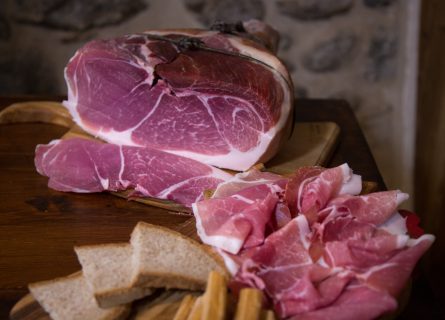
The beautiful towns and villages of Valle d’Aosta, tranquil and immaculately clean, can nonetheless appear almost lifeless in the low season. Yet visitors always find themselves pleasantly surprised by the number of excellent trattorias, osterie, and restaurants serving very fine and beautifully presented dishes: freshwater fish, creamy risottos, exquisite pasta, and Alpine beef. The local ingredients are world-class; every restaurant worth its regional reputation offers ‘fonduta’ (fondue), made with the delicious Fontina and Toma di Gressoney cheeses. But, our money is on the truly delectable Mocetta salami (normally made from beef; however, antelope and even ibex are occasionally used) and the meltingly tender Jambon de Bosses. Producers age this exceptional mountain ham for up to 30 months at high altitudes and flavor it with garlic, juniper, fresh herbs, and pepper. We promise that you’ve never tasted anything quite like it.
Wineries Recommended by Cellar Tours
Further Reading: Discover More Related Blog Content
More information
If you would like us to customize an exclusive luxury tour, contact us and let us know your travel plans. We offer luxury food and wine tours for private groups of a mininium two guests. In addition, all of our private, chauffeured tours are available year-round upon request.

